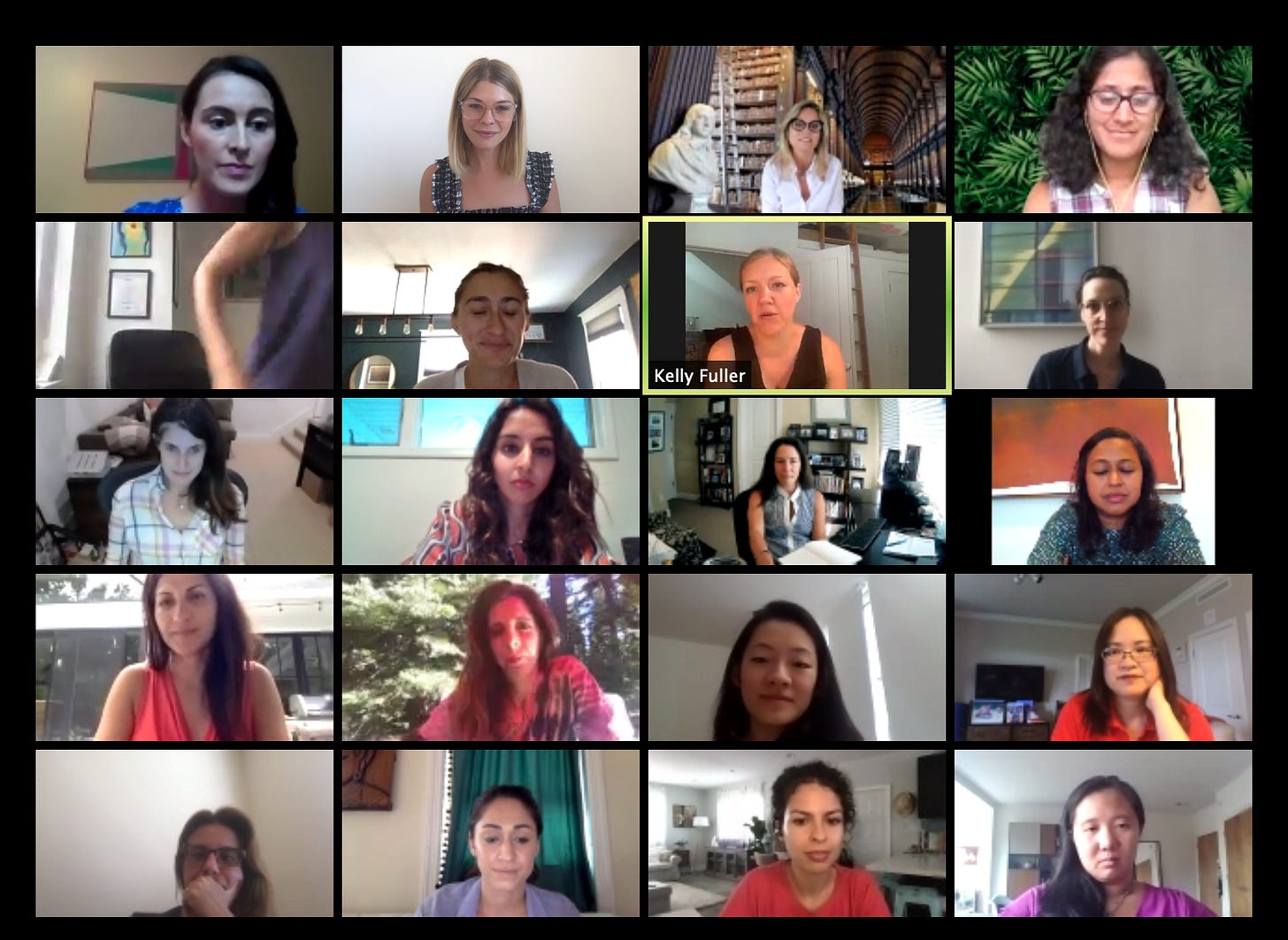What product features would improve the online learning experience?
Straight from the mouths of some of the most senior women in edtech, here is what needs to be created today

Yesterday I hosted my OG group of Women in Education for our first virtual conversation. This is a group that I traditionally get together over dinner with my edtech investor friend, Michelle Dervan @ Rethink Education, but yesterday we gathered in Zoom boxes to discuss a simple yet complex question: what features would improve the online learning experience?
As I’ve previously discussed, remote learning in the US is falling short in a big way. Honestly, it sucks. As The Wall Street Journal reported, even though many students are tech savvy, that doesn’t ensure they will do well with remote learning. On top of that, most schools are still not ready to deliver class virtually. Ex: Despite having last Spring as a test run, the San Jose Unified School District rolled out Canvas (the leading learning management platform that allows schools to build a digital learning environment) to teachers 24 hours before school started. That’s like a company implementing Salesforce and having 24 hours to customize/build it out before the inside sales team had to sell from it.
So while the education community struggles to implement online learning, what product features can edtech companies deliver that would improve the experience?
Straight from the mouths of some of the most senior women in edtech, here is what needs to be created today. To prepare you in advance, these recommendations are a little “inside-baseball.”
Tools that help parents know how to guide their students
Remote learning has not come with an instruction guide for parents. Many of which have never logged into the platforms their students’ classes use. To date the technology that does exist is the ability for parents to view their students progress. That doesn’t make them a daily active user, that makes them a viewer. Product idea: what is needed across every type of platform that delivers students instruction is a new set of parent user licences that guide parents through the platform as a proxy instructor.
Ability for small groups of students to connect live
Many schools and PTAs are buying out Outschool courses for all the students in a class. They are doing this so students can do group work. Outschool is breaking up classes of 32 students into small groups (12 is their recommended size) while they take the course. Why? That’s how students can still build teamwork skills, make interpersonal connections, etc. while learning remotely. Right now the only tech product that can solve for this need is Zoom breakout rooms. That’s not enough. Product idea: Outschool white-labels it’s small group collaboration platform or a new product enters the market that allows students to work in small groups. What would it need? Live video and a collaborative whiteboard. All of this already exists, but the gap in the market is there is no easy way for teachers to facilitate. We need a great LMS plug-in here.
Assessment of student retained learnings
This seems simple, but quiz based games and good old standardized testing don't solve the issue of “did students retain what they just learned in class?” Teachers can achieve this in a live classroom typically through social cues, by calling on students to answer questions etc. What teachers have now with remote learning is the ability to see if students did the work, but not if they understand the work. Product idea: Another white-labeled product that allows teachers to easily ask students a set of questions at the end of the lesson - like the questions you would see at the end of a chapter in a textbook - and track in a dashboard.
Everyone in the group agrees, COVID will accelerate change in a good way and the pandemic is the kick in the pants that the higher-ed system needed to finally change. With that said, the shift that needs to be made now: stop trying to use technology to replicate exactly what’s happening (or would have happened) in the classroom and shift to a new paradigm of instruction.



